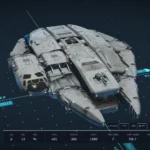Unlocking the secrets of a captivating game lies in understanding the enigmatic concept of the core game loop. Like the beating heart of a game, the core game loop is the essence that keeps players engaged, excited, and coming back for more. In this comprehensive guide, we’ll delve into the captivating world of core game loops, unraveling their anatomy, importance, and how to design one that keeps players hooked. Whether you’re a novice game designer or a seasoned pro looking to perfect your game’s core loop, this is your ultimate playbook. So, let’s embark on this thrilling journey to demystify the core game loop and elevate your game design prowess!
Understanding the Core Game Loop
At the heart of every memorable and engaging video game lies what industry insiders refer to as the core game loop. This concept, while simple in theory, is the linchpin of successful game design, shaping how players interact with the game world and establishing the rhythm of play. To illuminate the essence of a core game loop, consider the cadence of actions in major titles such as Call of Duty or Battlefield, where the loop consists of targeting enemies, eliminating them, and then moving on to seek new adversaries.
The Anatomy of a Core Gameplay Loop
A core gameplay loop is, fundamentally, a series of actions that players repeat throughout the game. It is not merely a feature but rather the backbone of the gaming experience. For instance, in running games, the loop is encapsulated by the continuous cycle of running and jumping. In puzzle games like match-3s, it involves swapping gems and strategizing subsequent moves. These loops are meticulously designed to be performed repeatedly, providing the player with a sense of progression and achievement.
Key Aspects of a Core Loop
Breaking down the core loop into its basic components, we find three pivotal elements: PLAY, GET, and UPGRADE. Players engage in the core gameplay (PLAY), through which they acquire resources (GET), and use these resources to enhance their abilities or gear (UPGRADE), thus equipping them for further challenges. This cyclical process is often summarized by the phrase “Play-Get-Upgrade-Repeat,” highlighting the perpetual nature of gameplay loops.
Why Core Loops are Crucial in Gameplay
The significance of core loops in gaming cannot be overstated. A well-defined core loop is essential for capturing and maintaining player interest. As games have evolved over the past two decades, so too have the expectations for how long a game should retain its appeal. The core loop is the element that players engage with most frequently and remember most vividly. It’s what people envision when they recall moments spent crushing candies in Candy Crush Saga or deploying troops in Clash of Clans.
Designing the Core Gameplay Loop: A Beginner’s Guide
Crafting a compelling core gameplay loop is both an art and a science. Aspiring game designers should prioritize simplicity and clarity in their loops, ensuring that the actions within the loop are easily understood and intrinsically rewarding. The loop must also provide a sense of progression, offering players clear objectives and tangible rewards for their efforts. This progression often takes the form of leveling up, acquiring new skills, or unlocking additional content.
Strategies for Structuring Your Gameplay Loops
When structuring gameplay loops, consider the frequency and variety of actions players will perform. A diverse yet coherent loop will keep players engaged without overwhelming them. The loop should also be balanced, presenting challenges that are neither too easy nor insurmountably difficult. Lastly, the loop must be integrated seamlessly with the game’s narrative and aesthetic elements, creating a harmonious and immersive experience.
What Makes a Good Core Loop in Gameplay?
A good core loop in gameplay is characterized by its ability to engage players in a continuous cycle of rewarding actions. It should offer a balanced mix of challenge and satisfaction, prompting players to enter a state of flow where time seems to vanish. The mechanics should be intuitive yet deep enough to allow for mastery over time. Additionally, the loop should align with the game’s overall theme and objectives, reinforcing the player’s sense of purpose within the game world.
What Makes a Good Core Loop in Progression?
In terms of progression, a good core loop facilitates a sense of forward momentum. Players must feel they are advancing in skill, power, or narrative. This can be achieved through incremental improvements, such as enhanced abilities or more potent equipment, which in turn enable players to tackle more formidable challenges. Progression loops should also offer variety to prevent monotony, introducing new elements that refresh the gameplay experience.
Core Gameplay Loop Examples Across Genres
Different genres of games employ distinct core gameplay loops that cater to their unique audiences and gameplay styles. Here, we’ll delve into several examples to illustrate how core loops manifest across various gaming experiences.
First/Third Person Shooters Core Loop Examples
In first-person and third-person shooters, the core loop revolves around a cycle of seeking enemies, engaging in combat, and then searching for the next encounter. This loop is designed to keep the player in a constant state of action, with brief intermissions for strategizing or resupplying.
RPG Core Loop Examples
Role-playing games (RPGs) typically feature core loops that encompass exploration, combat, and character development. Players explore new areas, encounter foes, and through these encounters, gain experience and resources to improve their character’s abilities.
2D Game Core Loop Examples
2D platformers or puzzle games often have core loops focused on overcoming obstacles, solving puzzles, and progressing to the next level or area. These loops are designed to test the player’s reflexes, problem-solving skills, and adaptability.
RTS Core Loop Examples
Real-time strategy (RTS) games have core loops that involve resource management, base building, and tactical combat. Players must balance the growth of their base with the production of units and the execution of strategies against opponents.
How to Perfect Your Game’s Core Loop
Perfecting a game’s core loop requires a deep understanding of the player’s experience and meticulous fine-tuning. Game developers must observe how players interact with the loop, gathering data on engagement and satisfaction. Iterative design is key, making incremental adjustments based on player feedback and performance metrics. Ultimately, a perfected core loop is one that players find endlessly enjoyable, motivating them to return to the game time and again.
For further insights into core gameplay loops and their significance in game design, explore resources like GameDesigning.org and GameAnalytics.
Conclusion
In conclusion, the core game loop is a critical component of game design that defines the player’s moment-to-moment experience. A strong core loop is engaging, rewarding, and in harmony with the game’s overall objectives. By crafting loops that captivate players and encourage continual progression, game designers can create experiences that resonate and endure in the competitive landscape of interactive entertainment.
What is a core gameplay loop?
A core gameplay loop is a highly specified set of actions undertaken by the player, often defining the main actions in a game.
Why are core loops important in gameplay?
Core loops are important as they structure the main mechanics of the game, defining what players engage with most frequently and what they remember about the game.
How to design a gameplay loop?
To design a gameplay loop, you need to conceptualize a cycle of basic actions players can take at any point in time, arranging them in a way that players are expected to use them at a certain frequency.
What makes a good core loop in gameplay?
A good core loop in gameplay involves a set of actions that are engaging, memorable, and define the primary game system or mechanic.
What makes a good core loop in progression?
A good core loop in progression involves a cycle of actions where players play the core gameplay to obtain resources that can be spent on upgrades, making the next attempt easier.







